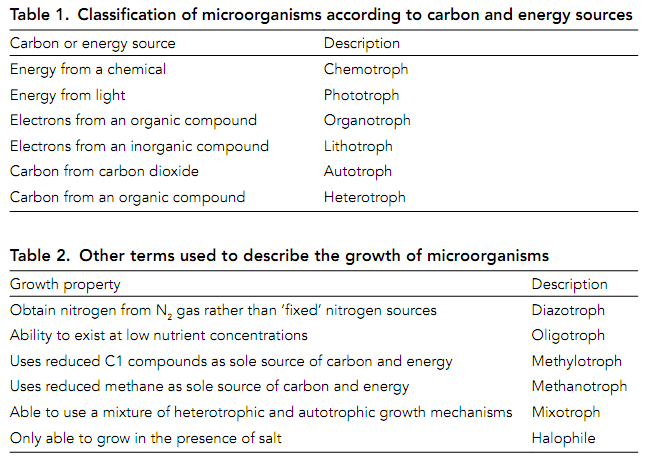Types of microbial growth
Microbes can convert an enormous range of compounds into biomass – from foodstuffs which humans would consider eating right the way through to compounds such as cyanides that are considered highly toxic. Some man-made chemical compounds are new to the natural environment, so microbes have yet to evolve pathways to deal with them. These compounds are called xenobiotics but eventually microbes will evolve systems to metabolize these compounds too.
We can give a very broad classification to microbes based on how they grow in Table 1 but also at which temperature and pH they do it in Figure 1. These terms can be combined so Thermus aquaticus can be described as a thermophilic heterotroph or Paracoccus versutus could be described as a mesophilic chemolithoheterotroph. Many other terms are used to describe the overall modes of growth of organisms in Table 2 and these are frequently used to describe whole populations as well as individual species.


Figure 1. Classification of microorganisms according to (a) temperature and (b) pH.